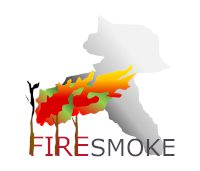
Portugal has the highest number of forest ignitions in the countries of southern Europe (Rodrigues et al., 2013). The ability to predict the ignition and spread of forest fires, as well as the behavior of air pollutants emitted, is a decision support tool, important to improve the effectiveness and efficiency in resource management, for operations of preventing, detecting and fighting forest fires and monitoring air quality, with repercussions on public health.
This proposal aims to develop an existing meteorological weather forecast model with an air chemistry module coupled to a surface forest fire propagation module (CCATT-BRAMS / SFIRE), which simulates in the short term and in real-time. The interest is to have the estimation of the behavior of the plumes of the fires in real-time, not only of the fire on the forest surface, but also to include the fire of origin in a crown tree, and thus, simulate the fire in areas of complex forest fuel, and with it create an integrated
fire forecasting system. With this model, we obtain a direct relationship between the feedbacks of the dynamics, chemistry, and thermodynamics of the atmosphere and the fire, and with it, we can monitor the air quality and the dispersion trajectories of the pollutants of these smokes, of the anthropogenic and biogenic pollutants. With the result of their simulations, it is intended to provide a public access service of atmospheric scope, over the domain of continental Portugal, using a tool for viewing images and other related content on an internet site.
Thus, within the scope of the project, further developments of the BRAMS (Freitas et al 2017) model will be made, namely in the surface fire propagation module (SFIRE) with the incorporation of crown tree fire and the introduction of fire smoke pollutants in the module model Eulerian Coupled Chemistry, Aerosol and Tracer Transport (CCATT). A module for igniting fires derived from natural and human causes will be coupled to the modelling system. The results of the modelling system will be made available through a visualization tool, which will allow access to information on the progression of the fire, the concentrations of pollutants associated with it, as well as alerts of potential fire ignition. One of the challenges is the development of the modelling system, which involves the simulation of complex processes, maintaining the characteristics of rapid execution.
To achieve the aforementioned objectives, an interdisciplinary team from the University of Aveiro was formed and invited to join the team, a researcher from NASA Goddard Space Flight Center (USA), and the National Institute for Space Research (Brazil), which including specialists in high-performance programming and meteorological and weather modelling, fire progression, in characterizing the emission and dispersion of smoke, impacts on air quality and human health, and in remote sensing and geographic information systems.
